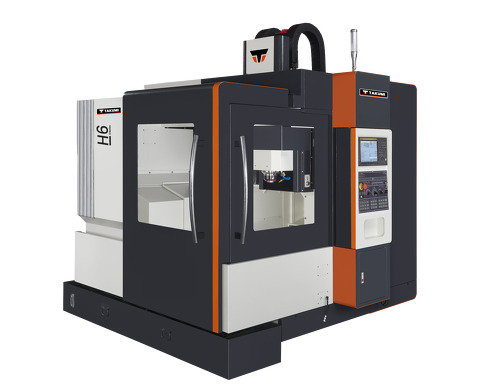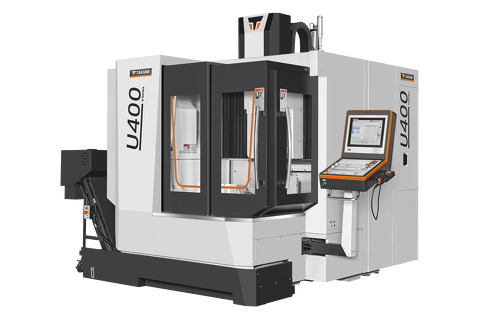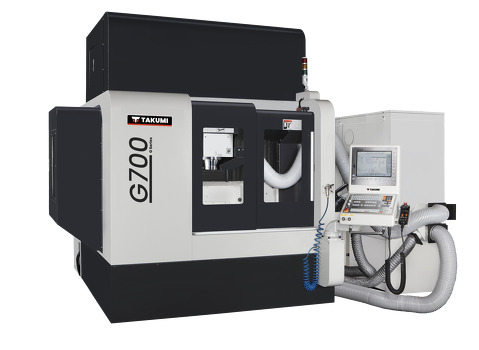- Machining center
- Control
- News & Media
- Company
- Blog
- Contact
Your Ultimate Guide to Mastering CNC Precision Techniques for Superior Manufacturing
In the ever-evolving landscape of manufacturing, achieving unparalleled accuracy is paramount, and CNC precision techniques have emerged as the cornerstone of superior production quality. As industries demand tighter tolerances and more intricate designs, mastering CNC precision becomes essential for manufacturers seeking to stay competitive and deliver top-notch products. This guide will unravel the complexities of CNC precision, providing you with valuable insights and practical strategies to enhance your machining capabilities. From understanding the fundamental principles of CNC technology to exploring advanced techniques that can elevate your manufacturing process, you will discover how to leverage precision to achieve excellence in every project. Join us on this journey to unlock the full potential of CNC precision and transform your manufacturing practices for remarkable results.

CNC Precision Techniques: Understanding the Fundamentals for Effective Manufacturing
The global CNC machine market is poised for remarkable growth, with projections indicating an increase from $101.22 billion in 2025 to $195.59 billion by 2032, reflecting a compound annual growth rate (CAGR) of 9.9%. This surge underscores the vital role CNC precision techniques play in enhancing manufacturing efficacy. Understanding the fundamentals of these techniques is essential for manufacturers aiming to elevate their operational precision and overall productivity. As such, mastery of CNC technologies not only ensures superior product quality but also facilitates efficient resource utilization, driving down costs while simultaneously improving output.
Additionally, the CNC machine tool market is expected to grow from $27.16 billion in 2025 to $44.64 billion by 2033, with a CAGR of 6.4%. This growth trajectory highlights the increasing demand for advanced manufacturing solutions, where CNC precision techniques are at the forefront. As industries continue to adopt smarter technologies and integrate IoT frameworks, the interplay between effective CNC techniques and sophisticated machine operations will become crucial for maintaining a competitive edge. Such insights reinforce the necessity for manufacturers to comprehend and implement precision methodologies in their CNC operations systematically.
Exploring Advanced CNC Machinery: Innovations Shaping the Future of Precision Engineering
The advancements in CNC machinery are transforming the landscape of precision engineering, reshaping manufacturing processes across various sectors. As the global CNC machine market is set to expand from $101.22 billion in 2025 to an anticipated $195.59 billion by 2032, the innovation in technology will play a crucial role in enhancing productivity and efficiency. Manufacturers are increasingly adopting state-of-the-art CNC systems that not only improve accuracy but also streamline production workflows.
To maximize the benefits of advanced CNC machinery, consider implementing these tips: First, ensure regular maintenance of your CNC machines to prevent downtime and preserve precision. Second, invest in high-quality cutting fluids to enhance machining efficiency and extend the life of your tools, as these fluids reduce friction and wear during operations. Lastly, stay informed about emerging trends such as AI integration in machining, which can offer personalized automation solutions, optimizing both design and manufacturing processes.
The future of CNC technology promises even more revolutionary changes, particularly as industries embrace smart factory innovations. Enhanced metrology tools will provide manufacturers with valuable insights into the production process, ensuring that quality control is as refined as the components being created. Adaptability and continuous learning will be key for manufacturers aiming to stay ahead in this rapidly evolving landscape.
Your Ultimate Guide to Mastering CNC Precision Techniques for Superior Manufacturing
| Technique | Description | Material Compatibility | Precision Level | Applications |
|---|---|---|---|---|
| Laser Cutting | High-speed cutting using a focused laser beam. | Metals, Plastics, Wood | ±0.1 mm | Signage, Architectural Features |
| 3D Printing | Layer-by-layer additive manufacturing technique. | Plastics, Composites, Metals | ±0.2 mm | Prototyping, Custom Parts |
| CNC Milling | Subtractive machining using rotary cutters. | Metals, Plastics | ±0.05 mm | Machined Parts, Custom Tools |
| Waterjet Cutting | Cutting materials using high-pressure water jets. | Metals, Glass, Stone | ±0.5 mm | Stone Cutting, Complex Shapes |
Integrating Software Solutions for Enhanced CNC Precision and Efficiency
As the global CNC machine market continues to expand, projected to grow from $101.22 billion in 2025 to $195.59 billion by 2032 at a CAGR of 9.9%, the integration of advanced software solutions becomes crucial for manufacturers aiming to enhance precision and efficiency. Embracing cutting-edge software tools not only facilitates accurate machining but also optimizes overall production workflows. By leveraging automated systems and real-time data analysis, companies can significantly reduce lead times and improve product quality.
Industry experts highlight the transformative potential of AI-driven solutions in streamlining CNC operations. For instance, advancements in artificial intelligence enable predictive maintenance, allowing manufacturers to preempt equipment failures and minimize downtime. With enhanced software capabilities, businesses can achieve greater precision in machining processes, ensuring that they meet the meticulous standards demanded by today’s competitive market. As the demand for superior manufacturing continues to rise, incorporating these innovative tools is vital for staying ahead in the CNC landscape.
Your Ultimate Guide to Mastering CNC Precision Techniques
This bar chart represents the impact of integrating software solutions on CNC precision and efficiency across different manufacturing sectors. The values indicate the percentage improvement in precision, showcasing how technology enhances manufacturing processes over time.
Best Practices for Maintaining CNC Equipment to Ensure Accuracy and Longevity
 Maintaining CNC equipment is crucial for ensuring both accuracy and longevity in manufacturing. One of the best practices is to establish a regular maintenance schedule. This includes daily checks for debris, weekly lubrication of moving parts, and monthly inspections of critical components such as ball screws and linear guides. By adhering to a routine, you can prevent small issues from escalating into significant malfunctions.
Maintaining CNC equipment is crucial for ensuring both accuracy and longevity in manufacturing. One of the best practices is to establish a regular maintenance schedule. This includes daily checks for debris, weekly lubrication of moving parts, and monthly inspections of critical components such as ball screws and linear guides. By adhering to a routine, you can prevent small issues from escalating into significant malfunctions.
Another key tip is to ensure that your CNC machines are kept clean and free of contaminants. Dust and chips can lead to precision errors and accelerate wear on components. Implementing an effective cleaning protocol, including the use of vacuum systems and protective coverings, can help maintain a pristine working environment. Additionally, calibrating the machine regularly ensures that it continues to perform at peak precision levels. Regular calibration helps to correct any deviations that may occur over time, thereby extending the lifespan of your equipment.
Lastly, always stay updated with the manufacturer’s recommendations for parts and software updates. This not only helps in keeping your CNC machinery operating efficiently but also incorporates the latest technology and improvements available in the market. Investing time and resources into these best practices ensures that your CNC operations remain accurate and reliable for years to come.
Case Studies: Successful Implementation of CNC Precision Techniques in Various Industries
In the manufacturing landscape, CNC precision techniques have revolutionized production processes across various industries. One striking case study comes from the aerospace sector, where a leading manufacturer incorporated advanced CNC machining to produce complex components with exceptional accuracy. This approach not only minimized material waste but also significantly reduced production time, allowing them to meet stringent regulatory standards while enhancing overall quality.
Another compelling example is found in the automotive industry, where a firm successfully implemented CNC wire cutting technology for intricate part fabrication. By adopting this precision technique, the company improved its ability to create lightweight yet durable parts. This innovation not only optimized performance but also contributed to greater fuel efficiency in their vehicles. These case studies underline the transformative effects of CNC precision techniques, showcasing how they enhance manufacturing capabilities and drive competitive advantage in diverse industrial applications.

Related Posts
-

Ultimate Comparison of Top Providers for Best CNC Precision Machining
-

Understanding Global Industry Standards for Best CNC Machining Precision Production
-

Exploring the Future of Best High Speed CNC Machining Innovations for 2025
-

Ultimate Comparison of the Top 5 CNC Vertical Machining Centers: Performance Metrics and ROI Analysis for Global Buyers
-

7 Secrets to Finding the Best CNC Precision Machining Suppliers Worldwide
-

5 Reasons High Speed CNC Machining Can Boost Your Production Efficiency by 50 Percent



